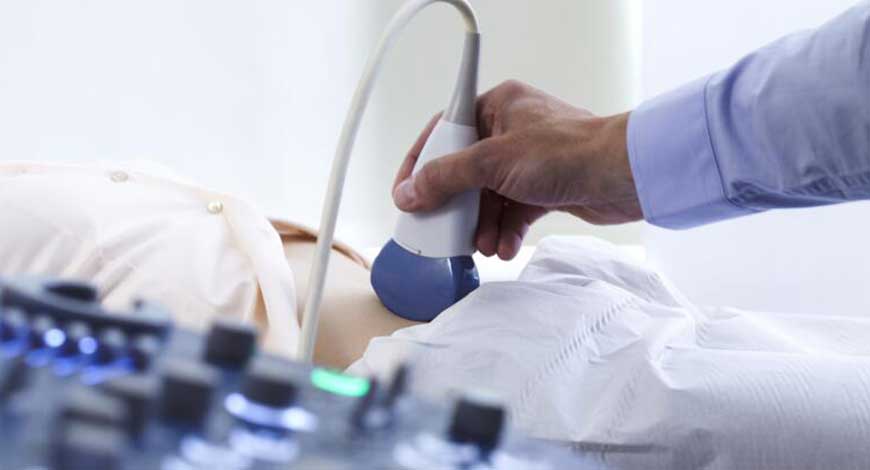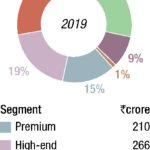MedTech
POCUS seems to be the way to go

The ultrasound players need to now take the handheld systems segment seriously.
 Over the years, the use of ultrasound has gradually expanded beyond radiology, cardiology and OB/GYN to a wide range of clinical specialties, including surgery, musculoskeletal, and gastroenterology, to name a few, expanding the customer base and driving additional revenue growth. This trend started out in developed countries, but more recently it has spread to developing markets, where specialty departments at larger hospitals now often have their own budgets to buy ultrasound equipment.
Over the years, the use of ultrasound has gradually expanded beyond radiology, cardiology and OB/GYN to a wide range of clinical specialties, including surgery, musculoskeletal, and gastroenterology, to name a few, expanding the customer base and driving additional revenue growth. This trend started out in developed countries, but more recently it has spread to developing markets, where specialty departments at larger hospitals now often have their own budgets to buy ultrasound equipment.
Additionally, ultrasound is gaining acceptance in acute and primary care settings, both as a screening and diagnostic tool, as well as for procedure guidance. As well as the growing customer base, the use of ultrasound with existing customers is expanding, typically as a lower-cost and/or radiation-free alternative to other imaging modalities, such as MRI and CT. The global shift to value-based care as a replacement to the traditional fee-for-service approach will support this trend.
The COVID-19 (SARS-CoV-2) pandemic has increased demand for handheld ultrasound massively in 2020, with the technology becoming a frontline diagnostic tool for COVID patients. The availability of affordable and fit-for-purpose handheld scanners has helped hospitals to deal with more patients more quickly – a crucial factor in an exponentially growing pandemic. Handheld scanners, especially wireless versions, are easier to disinfect than traditional cart-based systems and other imaging modalities and infected patients do not have to move through hospitals to imaging departments, raising the risk of spreading infection. It is forecast, however, that COVID-19 will diminish as a driver of adoption of handheld ultrasound as the worst effects of the pandemic (hopefully) continue to lessen.
But, COVID might also have a longer-term impact on the handheld ultrasound market in other, less direct ways.
There is still a long way to go before people carrying out their own ultrasound scans at home is as common as them taking their blood pressure or temperature, but the trend is real. Decentralization is happening; ultrasound has moved from dedicated hospital units, to primary care centers and is making its way to people’s houses via COVID-catalyzed health visits.
How this trend develops is reliant on vendors being able to make their products affordable to customers, yet still profitable for themselves. It will also require careful consideration given to the implications and repercussions of allowing a professional tool out in the wild. In the longer term, these considerations, along with the growing adoption of telehealth services will mean a shift toward tele-ultrasound services, where customers will eventually receive scanners for free as part of a comprehensive ultrasound subscription service, much like today’s smartphone business model, with profits made from tele-ultrasound services and app sales.

“Healthcare sector is expecting tremendous demand of economically viable ultrasound equipment in current pandemic situation. It is basic for detecting lung lesions due to its sensitive high resolution images, guided bed side procedures and for interventional purposes. It is expected to be decisive with AI integration for automated detection of lung pathology.”
Dr Vivek Sharma
Associate Director Dept. of Radiology, Medanta The Medicity
Cost is still a barrier to increased adoption, but as that falls, it will just take one vendor, one provider one insurer, just one company with a novel strategy, to strike on the right model, which is both helpful and lucrative, before the floodgates open and ultrasound at home is an everyday occurrence.
Technology trends
Some of the recent and nascent innovations in ultrasound imaging include:
Super-resolution ultrasound directly measures vessel density, inter-distance, size, unique flow pattern, and fractal factor. Super-resolution separates echoes coming from sources closer than the classic diffraction limit.
Molecularly targeted contrast agents can visualize disease processes at the molecular level and monitor disease processes that are characterized by a differential expression of molecules on the vasculature like cancer or inflammatory diseases.
Radiomic describes the use of radiological data in a quantitative manner to establish correlations in between imaging biomarkers and clinical outcomes to improve disease diagnosis, treatment monitoring, and prediction of therapy responses.
High-intensity focused ultrasound (HIFU) can lead to local tissue heating, cavitation, and radiation forces, which can be used for a variety of therapies such as tissue ablation, image-guided drug delivery, sensitization to radiation therapy, immune stimulation, treatment of essential tremor, and immunotherapy in oncology.
Microbubble-enhanced ultrasound is used to improve drug delivery to pathologic sites. Oscillating microbubbles promote vascular perfusion, vascular permeability, or tissue penetration. This process is called sonoporation and has been shown to improve the delivery of 100-nm liposomes to and into pancreatic tumors.
The beam former determines the shape of the beam. Digital transducers enable the ultrasound beam to be focused with greater precision and at higher frequencies, and can be used with broad-bandwidth transducers.
High-frequency ultrasound imaging, using frequencies above 20 MHz, enable the imaging of superficial structures at very high resolution of 50 microns. Applications include the anterior chamber of the eye, intravascular ultrasound of arterial walls, skin, and cartilage.
Other developments include harmonic imaging, pulse-inversion imaging, elastography, tissue characterization, portable ultrasound machines, deep learning, and Artificial Intelligence.
Seems promising, at least for the discerning patient
New ultrasound users are driving growth of the point-of-care ultrasound (POCUS) market, so vendors cannot depend on existent market share. To succeed in the handheld ultrasound market, vendors must facilitate inexperienced users. Vendors also must prove continued value for POCUS in the post-COVID era. Historically, handheld ultrasound equipment market growth has been hindered by poor image quality, technological infrastructure challenges, and lack of trained technicians. New handheld systems are designed with embedded technology, including semiconductor chips, and AI programs, which significantly enhance image quality. Additionally, the supporting infrastructure, such as wireless networks, connectivity, and software, has caught up technologically to handheld systems and unleashed their full capabilities. As AI, ease of use, and reduced costs become the hallmarks of handheld ultrasound, these devices could become as essential and common as the stethoscope.











